Unusual edibles that love growing in Marin
-
Many strange fruits and perennial greens are low-fuss, enthusiastic growers that love living in Marin. They may look different, but they produce loads of food.
When gardeners speak of “perennial vegetables,” the plants that often come to mind include asparagus, rhubarb, and artichoke. But don’t stop there! Other rare and/or unusual perennial vegetables may be worth cultivating in your own backyard.
Quick reminder: healthy soil is key to growing most any fruit or vegetable. The secret to healthy soil is really simple: add two to three inches of organic material, such as manure or compost, and then let the decaying organisms in the soil do the work. These lovely, hard-working soil dwellers consume the organic debris you’ve added and leave behind humus, a mixture of gums, starches, and the plant parts that aren’t easily decomposed. Humus is garden gold since it can hold the equivalent of 80 to 90 percent of its weight in water, provides plant nutrients, and allows air to circulate through its light, fluffy structure.
Yacon: tastes like jicama, only better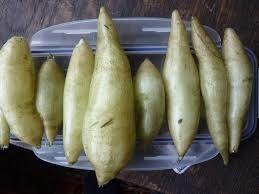 Yacon tubers harvested after digging up one plant. Photo credit: Andy Roberts
Yacon tubers harvested after digging up one plant. Photo credit: Andy RobertsYacon (Polymnia sonchifolia), also known as Bolivian Sunroot, is a relative of the sunflower and native to the high Andes. Yacon plants should reach 5-feet tall at maturity. The tubers are harvested in autumn. Yacon is a versatile plant, as it can be eaten raw like fruit or stir-fried, roasted, baked, or made into pies and chips. Some cultures wrap their food with the leaves of the yacon plant. It tastes like jicama, only better. Yacon is best grown in full sun and in well-drained, fertile soil.
In recent years, yacon has grown in popularity, both in gardening literature and in nurseries specializing in rare plants. This may be due to the fact that yacon is an up and coming “super food.” Food companies are developing yacon into various products such as yacon syrup, which is a low-calorie sugar substitute, appealing to both diabetics and people on diets.
Malabar spinach: big vine helps create an edible food forest
Malabar spinach is a vine that requires trellising and can reach 8 to 10 feet in length. It is a staple for those interested in creating an edible food forest in their backyards. It is not actually spinach, but it can be substituted in recipes that call for spinach. Malabar spinach is fleshy and mucilaginous and is best consumed cooked and not raw. Under the right conditions -- full sun and fertile, well-drained soil -- it is so prolific that one vine may feed a family of four. Malabar spinach is frost tender and may need to be dug up and brought indoors during the winter.
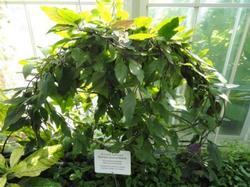 Gynura procumbens, known as longevity spinach, is a native of Asia but does well in Marin. Photo credit: D. Aderot
Gynura procumbens, known as longevity spinach, is a native of Asia but does well in Marin. Photo credit: D. Aderot
Longevity spinach: grows in sun or shadeAnother spinach like perennial, Gynura procumbens or longevity spinach, hails from tropical Asia and produces greens year-round. It can be eaten raw or cooked. The plant is the focus of extensive pharmacological research for its numerous health benefits. It is not in the spinach family but is related to daisies. This super-productive sprawler does well in sun or shade and is drought-tolerant.
Ground cherry: every fruit has a wrapperGround cherry, sometimes called cape gooseberry, husk cherry, or poha, produces fruit within 80 days of planting and keeps going year-round. Closely related to the tomato and tomatillo, the fruit grows in a husk that makes the plant look like it is covered with Chinese lanterns. Fruit ripens on the vine and then falls to the ground, which explains the common name. The fruit is the size of a marble and has a sweet, sour, tropical taste. This plant is happy in Marin, is drought-tolerant and will grow in full sun or part shade.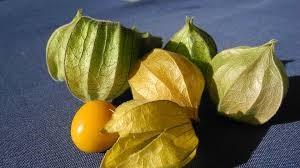 Cape gooseberries resemble tomatillo with its straw colored husk. Photo credit: Creative Commons
Cape gooseberries resemble tomatillo with its straw colored husk. Photo credit: Creative Commons
Collard tree: big, delicious leavesCollard trees produce beautiful and delicious blue-green or purple leaves that taste similar to kale. The leaves can be eaten raw or cooked. Like most brassicas, tree collards taste especially sweet and nutty during our cooler months of the year. Although their actual origin is unknown, it is believed that they come from Africa, and have been propagated and passed on within African-American communities in this country. Staking skills come in handy growing collard trees. Otherwise, this is one easy plant to grow. Use an eight-foot stake and drive it into the ground about two feet. Be sure to allow at least two inches between the stake and the root system. Use something soft and flexible to tie the plant, and don’t tie the stem too tightly. It grows in sun or part shade and is drought tolerant.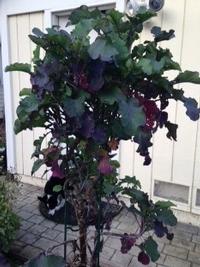 Tree collards are large-scale plants that produce beautiful, tasty leaves. Photo: Betty Homer
Tree collards are large-scale plants that produce beautiful, tasty leaves. Photo: Betty HomerTree collards can be difficult to find in retail nurseries. They’re typically passed on from gardener to gardener as cuttings. If you don’t have any friends with the goods, consider looking online at specialty permaculture and edible nurseries.
Cool season Asian vegetablesThere’s no dearth of exotic cool-season annual Asian vegetables that grow well in our Mediterranean climate. Chinese broccoli (Brassica oleracea alboglabra), also known as Chinese kale, gai lan, jie lan, gelancai, phakkhana, and numerous other variations, has a flavor reminiscent of broccoli, with succulent stems and mild leaves. The seeds germinate quickly, and growth is rapid when planted from October to December.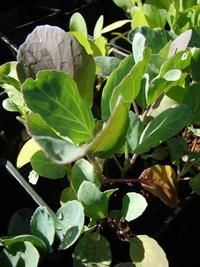 Leafy Asian greens enliven winter vegetable gardens with vibrant, healthy foliage. Photo: Wikimedia Commons
Leafy Asian greens enliven winter vegetable gardens with vibrant, healthy foliage. Photo: Wikimedia CommonsChinese cabbage (Brassica rapa) is another fine vegetable to grow in fertile soil during our cool season. Chinese cabbage is particularly sensitive to both cold and heat, but on the coast does well in the mild winter. A raised bed works well because the vegetable is less apt to drown in the heavy rains we get periodically. Make sure it gets enough water during our inevitable dry periods.
This is a good time to drop some Asian vegetable seeds in the flower beds near the kitchen. Bush sugar peas, tat soi, mizuna greens, and pak choi are attractive enough to grow in flower beds. They are beautiful, healthful, and provide fresh greens at a time when much of the country’s gardens are covered in ice and snow.





